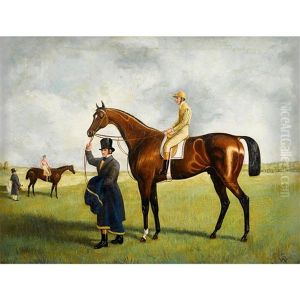Alfred Sheldon-Williams Paintings
Alfred Sheldon-Williams was a British-Canadian artist, known for his landscape paintings and his significant contribution to the art scene in Canada during the late 19th and early 20th centuries. Born in Camberwell, England, in 1867, Sheldon-Williams was exposed to the artistic world at a young age, largely due to his family's appreciation for the arts. His father, Frederick Sheldon Williams, was also a painter, which undoubtedly influenced Alfred's early interest and eventual career path in the art world. Seeking to hone his skills, Sheldon-Williams attended prestigious art institutions in both England and France, where he was able to study under renowned artists and immerse himself in the vibrant European art scene of the time.
His artistic journey took a significant turn when he decided to move to Canada in the early 1900s, a move that would mark the beginning of his lasting impact on Canadian art. Settling in Saskatchewan, Sheldon-Williams was captivated by the vast landscapes and natural beauty of Canada, themes that would become central to his work. His paintings often depicted the prairie landscapes with a depth of feeling and a keen eye for the interplay of light and shadow, capturing the essence of the Canadian wilderness with a unique blend of realism and impressionism.
Throughout his career, Alfred Sheldon-Williams was actively involved in the Canadian art community, contributing to its development and gaining recognition for his work. He exhibited with the Royal Canadian Academy of Arts and was a member of various art societies, through which he advocated for the appreciation and support of Canadian art and artists. Despite facing challenges, including periods of financial difficulty and the changing tastes of the art market, Sheldon-Williams remained dedicated to his craft, continuously evolving his style and technique.
Alfred Sheldon-Williams passed away in 1933, leaving behind a legacy that continues to be celebrated in Canadian art history. His contributions to the representation of Canadian landscapes and his influence on the art community have ensured his place among the notable artists of his time. Today, his works are held in several Canadian collections, including the National Gallery of Canada, and continue to be admired for their beauty and historical significance.


